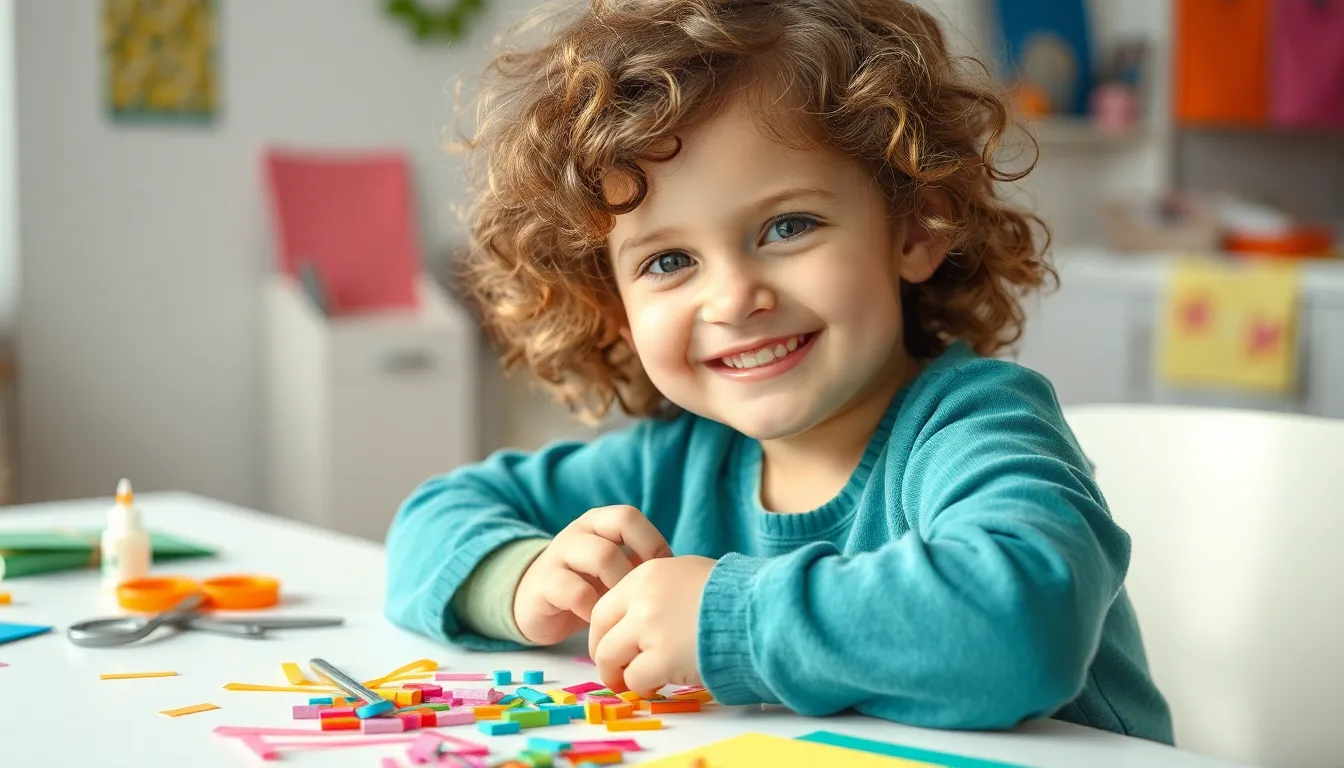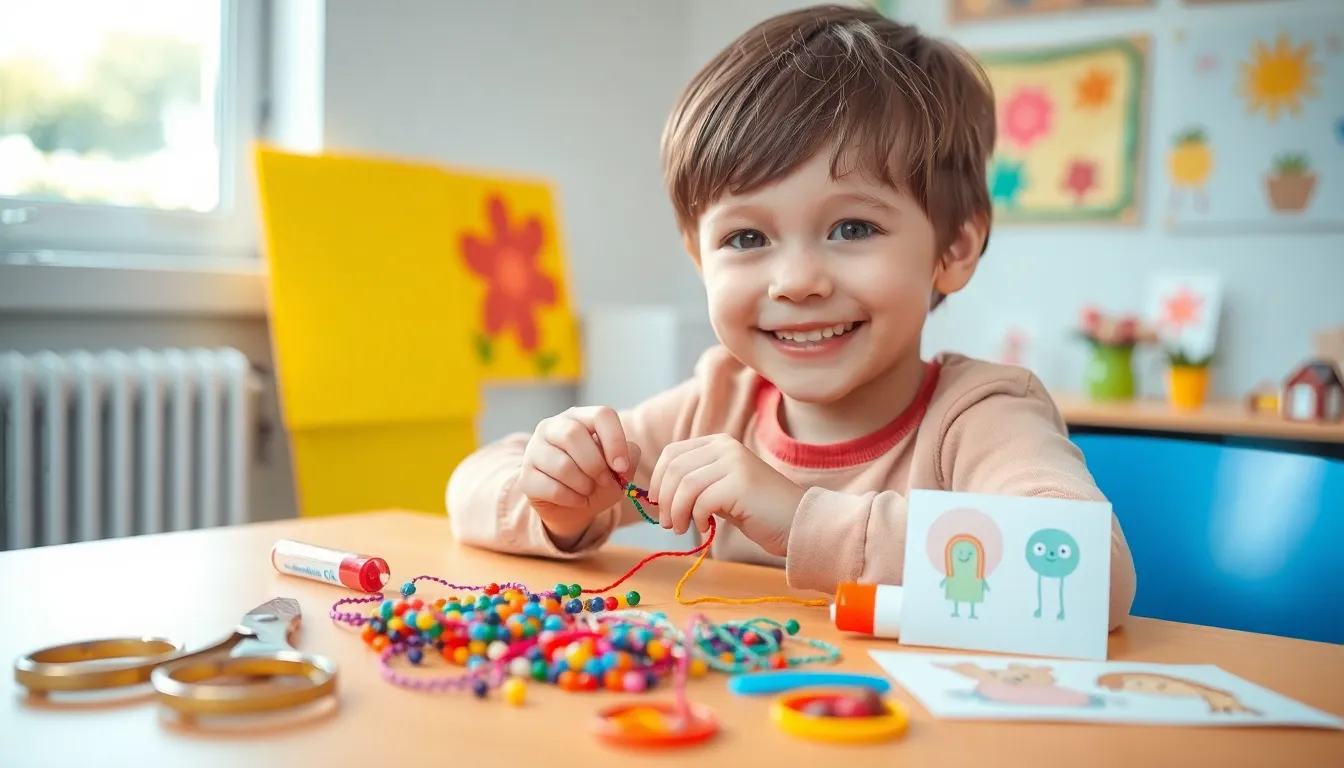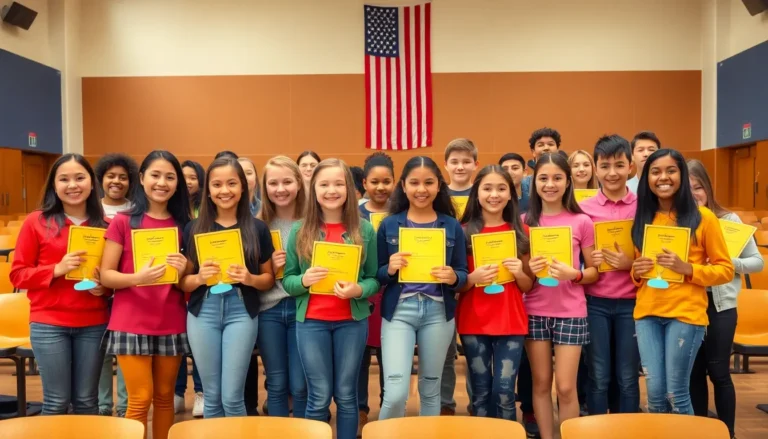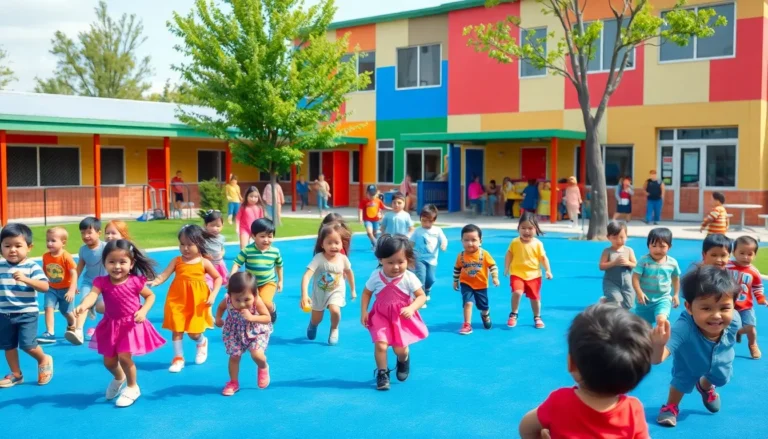Crafting isn’t just for adults with Pinterest boards and an overabundance of glitter—kids can dive into the fun too! Imagine a world where creativity flows freely, and every child becomes an artist in their own right. With a sprinkle of imagination and a dash of mess, DIY crafts can transform any dull afternoon into a vibrant adventure.
Table of Contents
ToggleFun DIY Crafts for Kids
Crafting encourages creativity, and kids enjoy expressing themselves through various projects. Activities such as making friendship bracelets foster social skills and promote teamwork. Materials like beads, strings, and scissors provide kids with everything needed to create unique accessories.
Creating homemade greeting cards serves as another fun option. Children can use colored paper, stickers, and markers to personalize cards for birthdays or holidays. This activity enhances fine motor skills while allowing for artistic expression.
Building a bird feeder offers a connection to nature. Using materials like pine cones, peanut butter, and birdseed, kids can craft simple feeders. Hanging these feeders attracts local birds and engages children in observing wildlife.
Painting rocks adds a splash of creativity to outdoor spaces. Kids can find smooth stones, wash them, and then decorate with acrylic paint or markers. This project promotes outdoor activity and creates colorful decorations for the garden.
Making slime has become a popular trend among children. Combining glue, baking soda, and contact lens solution results in a fun, stretchy material. This project enhances sensory play and provides hands-on experimentation.
Kids can also design their own T-shirts. Using fabric paint or tie-dye techniques allows for endless possibilities. Crafting wearable art encourages self-expression and brings a sense of accomplishment.
Transforming everyday items into crafts excites children’s imaginations. Empty cardboard tubes can become binoculars or puppets with a little creativity. This approach teaches resourcefulness while keeping costs low.
Embarking on these DIY projects fosters creativity and builds lasting memories. Engaging kids in crafting provides them with valuable skills and endless opportunities for fun.
Benefits of DIY Crafts

DIY crafts offer numerous benefits that contribute to children’s development. Engaging in these activities promotes learning while providing fun.
Enhancing Creativity
Creating crafts allows kids to explore their imagination openly. They can express themselves through various materials and colors, which fosters original thinking. Making unique items enables children to envision and bring their ideas to life. Additionally, crafting instills confidence as they see their concepts transformed into tangible objects. Children learn to experiment with different techniques, discovering what works best for them. This freedom often leads to innovative approaches and creative problem-solving skills. Encouraging kids to personalize their projects enhances satisfaction and keeps them engaged.
Building Fine Motor Skills
Crafts significantly improve fine motor skills in children. Coordinating hand movements while cutting, gluing, or drawing develops dexterity. Activities like threading beads onto strings also enhance hand-eye coordination. As kids manipulate various tools, they master control and precision. Crafting challenges them to refine their grip, wrist movement, and finger strength. Such skills are essential for everyday tasks like writing or buttoning clothes. Engaging in DIY tasks paves the way for improved concentration and patience, as children learn to focus on intricate details.
Popular DIY Craft Ideas
Crafting offers a variety of fun activities that inspire creativity in children. Different types of accessible crafts include paper crafts, recycled material crafts, and nature-inspired crafts.
Paper Crafts
Paper crafts engage kids in creative expression using simple materials. Origami provides a wonderful opportunity to develop fine motor skills, as children learn to fold paper into intricate shapes. Greeting cards bring joy to loved ones, encouraging kids to customize designs with their favorite colors and drawings. These activities teach patience and precision while offering a satisfying hands-on experience. Engaging with paper also allows kids to explore their artistic side without requiring extensive supplies.
Recycled Material Crafts
Recycled material crafts foster creativity while promoting environmental awareness. Kids can turn empty cardboard boxes into imaginative playhouses or puppets, sparking storytelling adventures. Egg cartons transform into caterpillars or storage organizers, inspiring resourcefulness in crafting. Plastic bottle planters enable children to connect with gardening while repurposing everyday items. Utilizing recycled materials not only provides endless possibilities for creativity but also teaches children about sustainability in a fun way.
Nature-Inspired Crafts
Nature-inspired crafts bring the outdoors into craft time. Collecting leaves, twigs, and stones offers a fantastic way to encourage children to explore their environment. Leaf rubbings create beautiful prints that capture the essence of nature. Building bird feeders using pine cones, peanut butter, and birdseed attracts local wildlife while teaching kids about ecosystems. This hands-on approach fosters curiosity and appreciation for nature, enhancing children’s crafting experiences.
Tips for Successful Crafting
Effective crafting requires the right approach. Following simple tips can enhance the experience for kids.
Choosing the Right Materials
Selecting the appropriate materials plays a crucial role in crafting success. Opt for non-toxic supplies to ensure safety. Consider using color paper, glue sticks, scissors, and markers, as they appeal to children’s creativity. Natural materials such as leaves or twigs can add an organic touch to projects. Easy-to-manage items promote engaging activities. Evaluate the age and skill level of children to align materials with their capabilities. Encourage exploration of recycled materials like cardboard and plastic, which teach resourcefulness.
Setting Up a Crafting Space
Creating an effective crafting space significantly impacts children’s engagement. Designate a specific area for crafting to minimize mess and distractions. An organized workspace enhances focus and enjoyment. Include essential tools within reach, allowing for easy access during projects. Using a table covered with a protective cloth prevents damage while providing ample surface area. Good lighting promotes visibility and precision during intricate tasks. Establishing a fun atmosphere can inspire creativity and enthusiasm for crafting.
Safety Considerations
Crafting activities should prioritize safety to ensure a positive experience for kids. Supervision is essential during DIY projects, especially when using sharp tools or small parts. Parents should provide age-appropriate tools and materials, keeping younger children away from items that pose choking hazards or require specialized handling.
Non-toxic supplies must be chosen for any craft project. Craft paints, glues, and markers labeled as non-toxic minimize potential health risks. Familiarity with product labels can aid in recognizing safe options for children. Ideally, parents should establish a rule for testing unfamiliar products first with a small application.
Setting up a safe crafting environment enhances overall safety. Designating a specific area for crafting helps contain messes and prevents accidents with household items. Additionally, ensuring that this area has good lighting allows children to work safely and effectively.
Encourage children to tidy up as they craft. Cleaning up spills and sorting materials avoids unnecessary hazards. Teaching kids to put items away properly reinforces organizational skills and keeps crafting spaces safe.
Emergency procedures should be clearly communicated. Kids need to know what to do if they get hurt or encounter a dangerous situation. Instilling a sense of awareness about risks empowers children while allowing them to enjoy crafting safely.
Ultimately, fostering a safe crafting experience ensures children can explore their creativity without unnecessary risks or fear of injury.
Engaging kids in DIY crafts opens up a world of creativity and fun. These activities not only provide entertainment but also foster essential skills that contribute to their development. By exploring various craft ideas from paper projects to nature-inspired creations, children can express their individuality while learning valuable lessons about resourcefulness and teamwork.
Creating a safe and inviting crafting space enhances the overall experience. With the right materials and supervision, kids can enjoy hours of imaginative play. Ultimately, DIY crafts are more than just projects; they’re opportunities for children to grow, learn, and create lasting memories.




